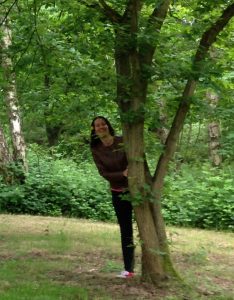Change is slow, for people and places alike, because it’s in our nature to resist change. We don’t want to have to take a step back before moving forward. We fear the unpredictability of consequences. History teaches us that societal progress is inevitable, yet we often try to stick with what’s already working, rather than take risks to improve what’s not.
Stories about change can help ease this transition, because in such stories we can explore the boundaries otherwise set in stone by our societies, traditions, beliefs or values. Stories offer us a safe place where we can question and discuss ideas, test the balance of wants and needs of ourselves and others, and try out various elements of change. In doing so, we can then better cope with change when it inescapably shifts from the realms of possibility and into reality.
Such stories can also be historically fascinating, because they allow us glimpses into the past. Take the legend of Robin Hood, for example, and how retellings of this famous English folklore have changed over time. At first, Robin Hood was a common yeoman of the people, hiding in Sherwood Forest to steal from the rich, give to the poor and evoke change during the 14th century. But over the centuries he has been turned into a noble man, a protestant, then a fallen aristocrat and a true monarchist, reflecting society’s need for change to be evoked by a legitimate authority figure, who can both represent and reinforce social structures.
Indeed, where provokers of change lack legitimacy, it can give us an excuse to ignore them.
I wanted my book When Dark Roots Hunt to reflect all this, so created a society on the brink of change, encapsulating contemporary concerns about land scarcity, technological power, sustainability and social responsibility, which are deeply embedded in the world. Indeed, The Supernatural Underground recently quoted my book as an example of a story where the environment is as much a character in itself, “with needs and wants and calamity to offer”, similar to Frank Herbert’s classic Dune, or the popular Dragonriders of Pern series. Wow, thanks The Supernatural Underground!
“This story [When Dark Roots Hunt] is compelling, impossible to put down, and as you read, you quickly find that the environment is as much a key to the mysteries as the people who try to survive it.”
Of course there are always some people who think ahead of the change curve – for example, check out this video of David Bowie foreseeing the power of the internet back in 1999, or the book Feed by MT Anderson predicting the future of information technology, published in 2002.
My main character Sala in When Dark Roots Hunt is ahead of the change curve too, having a clear vision of the future that awaits her world. But when I was writing this book, I asked YA readers about their main frustrations in life, and high on the list was not being heard, not having a voice. So Sala’s village ignores her – because as in the real world it’s in our nature to resist change – and the knock-on consequences of that resonate throughout Palude, causing much upheaval.
Perhaps, however, the more stories we tell about ‘worlds of upheaval’, which might have benefitted from more awareness, the more we could yet listen, and the easier we might yet evolve when progress inevitably comes.
Perhaps if you come to read When Dark Roots Hunt, you’ll let me know what you think!
More #StorytellingOverTime Posts:
- Who is Your Hero – all about the hero’s journey in stories
- Fear of the Unknown, Fear of Yourself – how we find a part of ourselves in wilderness stories
- No One Listens to Change – how stories can test out elements of progress
- The Power of Love & Betrayal – how stories help us understand the complex nature of love
- Monsters are Metaphors – how monsters are metaphors for the dynamics of society – to come!









Pingback: Fear of the Unknown, Fear of Yourself! #StorytellingOverTime – Zena Shapter
Pingback: Who Is Your Hero? #StorytellingOverTime – Zena Shapter
Pingback: Monsters Are Metaphors! #StorytellingOverTime – Zena Shapter
Pingback: The Power of Love & Betrayal! #StorytellingOverTime – Zena Shapter